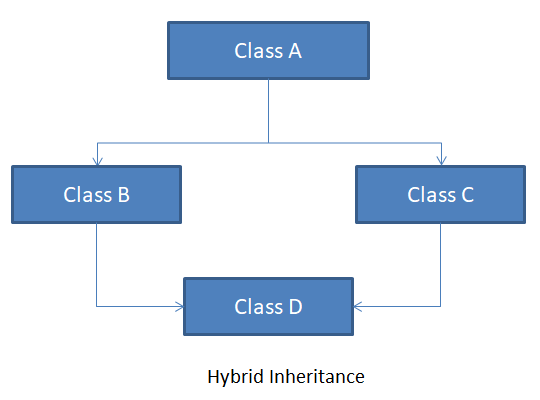Understanding Inheritance and Different Types of Inheritance
- Different Types of Inheritance
Inheritance
Inheritance is the process of creating a new Class, called the Derived Class, from the existing class, called the Base Class.
The “inheritance concept” can be grouped into two categories:
- derived class (child) – the class that inherits from another class
- base class (parent) – the class being inherited from

Different Types of Inheritance
Object-Oriented Programming (OOP) support the six different types of inheritance as given below:
- Single Inheritance
- Multi-level Inheritance
- Multiple Inheritance
- Multi-path Inheritance
- Hierarchical Inheritance
- Hybrid Inheritance
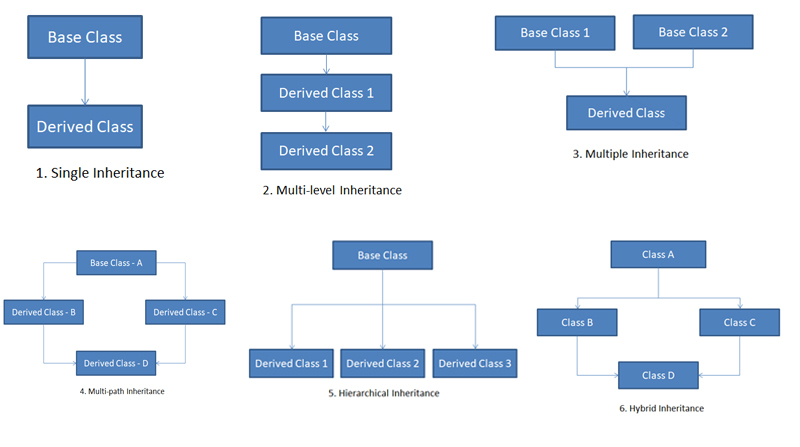
1. Single Inheritance
A derived class (Derived Class) is created from a single base class (Base Class).
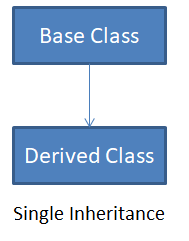
2. Multi-level Inheritance
A derived class (Derived Class 2) is created from another derived class (Derived Class 1).
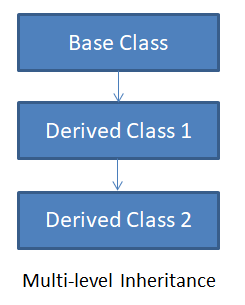
3. Multiple Inheritance
A derived class (Derived Class) is created from more than one base class (Base Class 1, Base Class 2).
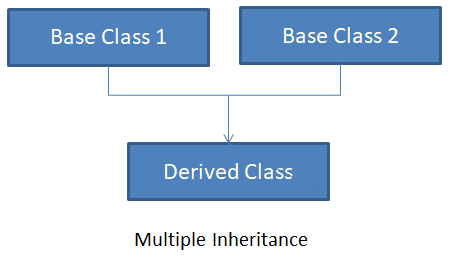
4. Multi-path Inheritance
Multi-path inheritance is a method of inheritance in which derivation of a class (Derived Class- D) from other derived classes (Derived Class- B, Derived Class- C) which are derived from the same base class (Base Class – A)
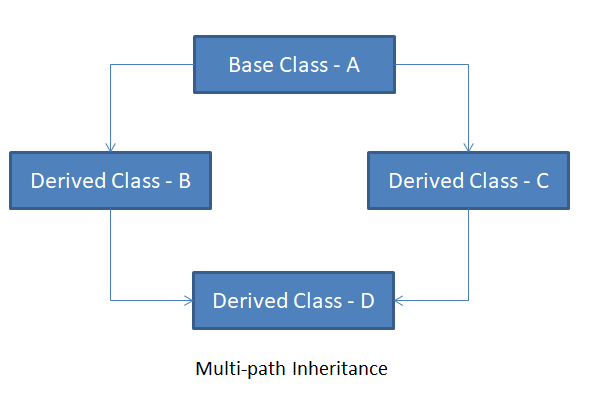
5. Hierarchical Inheritance
Under Hierarchical Inheritance, derived classes (Derived Class-1, Derived Class-2, Derived Class-3) are created from a single base class (Base Class) is called Hierarchical Inheritance.
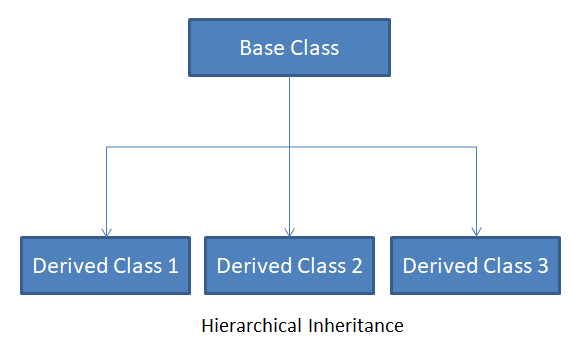
6. Hybrid Inheritance
Any combination of above three inheritances (single, multi-level and hierarchical) is called as hybrid inheritance.
